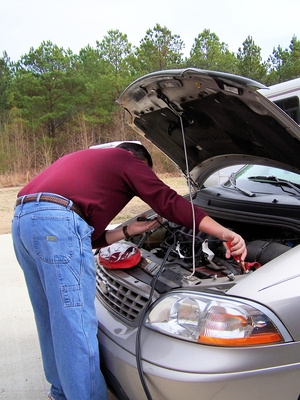

Electric vehicles use a traction battery, which actually takes the place of the power source for the vehicle. Most car batteries are designed for automobiles running on gasoline. The latter type of battery is commonly referred to as a SLI (starting, lighting and igniting), or in laymen terms, it is called a starter battery. In essence, all automobile batteries store chemical energy rather than electrical energy. Aside from working as a power source for electric cars, and a starter for gasoline cars, the battery also works as an electrical equalizer, meaning that dangerous voltages are absorbed by the battery from the car’s electrical system. This protects the vehicle from being damaged by transient electric charges.
The lead acid SLI battery produces electrical charges through a chemical reaction. Inside the battery, plates of lead, and plates of lead oxide are fixed in a water and sulfuric acid solution. The chemicals then produce electricity that may be conveyed to wires to turn on lights and start the ignition. The acid responds to the lead plates, which transmutes the lead oxide into lead sulfate. During a recharge of the battery, the chemical process undergoes a recto verso, or reverse in direction. The recharging effect transmutes the lead sulfate back to lead and lead oxide. These chemical reactions continue each time the battery is discharged and recharged.
During the initial start-up of the engine, the battery must work to start the car motor, and continues to work for the ignition system to crank. Under normal circumstances, the initial electricity from the charging system of the vehicle is enough to keep the car running. However, when the car is using too much electricity because of lights and radio or television, the battery is then discharged.
In some of the older batteries, water is lost through electrolysis. Old car battery designs require a bit of water to keep them going. The lead plates must not be exposed to the air and must remain submerged in the chemical solution. Filling up the battery with distilled water can refresh the battery after charging. The two important types of batteries are the SLI battery and the deep cycle battery. While some batteries are renowned to be both SLI and deep cycle, the latter type is designed to produce a high charge for a long period of time, as seen in motor boats. The downside to the deep cycle is that it won’t put out a high current for hefty hauling or loads that are heavy. The standard SLI battery has a low charge, and is designed to put out a minimal amount of electric discharge. The lead and lead ion plates in the SLI battery are separated by thinner plates that minimize electrical resistance.